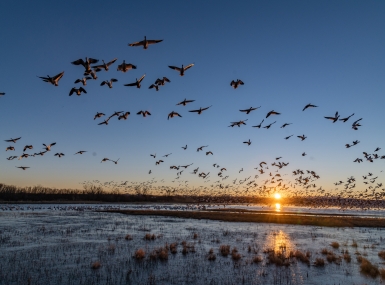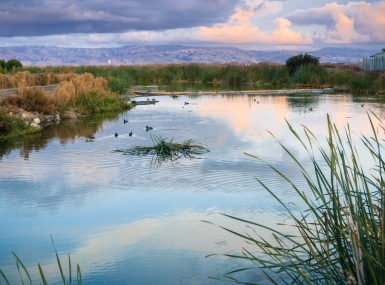Paid training program helps staff a county park system
Key Takeaways
Facing a lack of qualified candidates for its park system staff, Erie County, N.Y. created Workforce Buffalo Erie Corps, a training and internship program, to provide its low-income young residents with more job opportunities and better serve its park system.
Erie County is using federal Workforce Innovation and Opportunity Act (WIOA) funding to put Workforce Buffalo Erie Corps participants through six weeks of paid, specialized training for skills needed to be an effective staff member of the parks department.
Learn more
Workforce Buffalo Erie Corps is modeled off the Civilian Conservation Corps, a program that gave unemployed young men job opportunities and improved America’s public lands and parks during the administration of President Franklin Delano Roosevelt, according to Erie County Executive Mark Poloncarz.
The parks department is partnering on the program with the county’s social services department, workforce investment board and Erie 1 BOCES (Board of Cooperative Educational Services), a vocational organization training for youth. Any county resident, ages 18 to 22, living at less than 200% of the federal poverty level is eligible to participate and each six-week cohort has roughly 12 participants.
“If you hire individuals to work in a parks department, and they don’t even know what a chainsaw is — let alone how to use one — they’re not going to succeed,” Poloncarz said. “And you’re going to spend a lot of time training them on the job, when you really would hope that those individuals have the training beforehand.”
Abner Garcia, a Workforce Buffalo Erie Corps participant, learned how to use tools, such as a chop saw and power drill, and the processes of facility and grounds maintenance, including measuring and cutting wood, during his training.
“I learned a lot with the little amount of time that we had,” Garcia said. “… What really helped me, aside from the work, was learning teamwork and cooperation. Me and my crew, we all had a role, and we played it very well.
“We had workers chopping down trees into little logs, and then me and my partner would grab those logs and we would chip it, so you keep a flow.”
After the training is completed, participants begin paid internships with the parks department. Garcia interned for six months, doing maintenance work, such as weed-whacking, leaf-blowing and shoveling and salting snow. He’s since been hired as a seasonal park attendant.
Nearly every participant who completes the program and wants a job has been connected to one — if not through the county’s parks, then through New York state or the city of Buffalo’s systems, according to Poloncarz.
“Once they get through the training, if they want a job, they’ve been able to find them,” Poloncarz said. “And what’s successful about it is, not only do they have careers in the future, but it saves us from trying to train people on the job, which is not easy and can take a lot of time and money, by giving them the specialized training needed up front for not a long period [of time].”
Because the program is intended to benefit the county’s younger, low-income population, the social services department helps connect potential participants to it by identifying and reaching out to young adults who are unemployed or on public assistance, according to Poloncarz. Garcia first heard about the program through a friend who had seen a flyer for it.
“It definitely seemed like a good opportunity to connect to a job,” Garcia said. “I was working retail before, so it seemed like a good change.”
Garcia said he enjoys working seasonally for the parks and wants to continue doing so as long as possible.
“I’ve gained a lot of trustworthiness, a lot of workmanship,” Garcia said. “And I’m just learning a lot, to be honest. I’m being shown stuff I’ve never seen before, so I’m just exploring and improving as I go.”
As for advice Garcia has for future Workforce Buffalo Erie Corps participants: “Definitely get some steel-toed boots,” he said with a laugh.
Related News

DOI announces millions for multiple wetlands conservation programs
On September 18, the U.S. Department of the Interior (DOI) announced $54 million in land acquisitions for waterfowl habitat conservation through a program administered by the Migratory Bird Conservation Commission. The conservation actions add onto an August 4 announcement of $102.9 million in grant-based funding under a separate program administered by the Commission for the conservation of critical wetlands ecosystems and migratory bird habitat through the North American Wetlands Conservation Act.

House Natural Resources Committee advances reauthorization legislation for NOAA’s Digital Coast program
On September 17, the U.S. House Natural Resources Committee unanimously passed the bipartisan Digital Coast Reauthorization Act, which would reauthorize the Digital Coast program through 2030.

MAHA Commission releases federal strategy outlining next steps in childhood chronic disease prevention
On September 9, the U.S. Department of Health and Human Services (HHS) released the Make America Healthy Again (MAHA) Commission’s new Make Our Children Healthy Again Strategy, following the earlier MAHA Report published in May 2025. The strategy builds on the assessment’s findings regarding four key drivers of childhood chronic disease: poor diet, chemical exposure, lack of physical activity and chronic stress and overmedicalization.
Resource
WIOA 101: Counties and the Workforce Innovation and Opportunity Act

